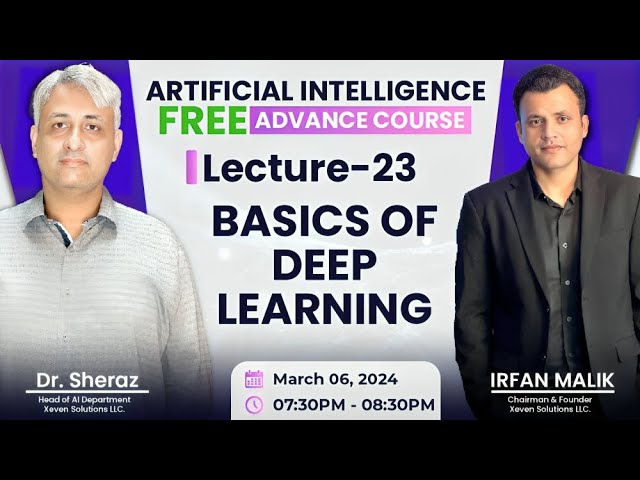
Deep Learning vs. Machine Learning: Understanding Neural Networks and Core Training Concepts
Imagine trying to teach a computer to spot cats in photos. With old-school machine learning, you spend hours picking out clues like ear shapes or whisker lengths. Deep learning flips that script. It lets the system dig out those clues on its own. This shift opens doors to tackling messy, real-world data that stumps traditional methods.
Introduction: The Evolution Beyond Conventional Machine Learning
Deep learning steps in where regular machine learning hits roadblocks. You feed it raw data, and it handles the heavy lifting. No more hand-holding with feature tweaks.
The Need for Deep Learning: Feature Extraction Limitations
Regular machine learning demands you extract features first. Think of it as prepping ingredients before cooking. You spot patterns manually, then let the model crunch numbers.
Deep learning models skip that step. They pull features straight from the data. This saves time and boosts accuracy on tough tasks.
The big win? Automation. It shines in spots where manual work falls short, like spotting subtle image details.
Handling Unstructured and High-Dimensional Data
Traditional tools falter with unstructured stuff. Images, audio, or videos pack high dimensions. A single photo might hold thousands of pixels, overwhelming decision trees or boosting algorithms.
These methods cap out at a point. They handle basic complexity but stall on deeper layers. Deep learning thrives here, scaling to massive datasets without breaking a sweat.
Take genetic data or video streams. Conventional ML chokes on the volume. Deep learning processes it smoothly, revealing hidden insights.
The Pillars of Deep Learning Success
Success in deep learning rests on three pillars: data, compute power, and smart algorithms. Plenty of quality data fuels the model. Strong hardware crunches the numbers fast.
Algorithms tie it together. Without them, even great data sits idle. Nail these, and you’re set for powerful results.
The Foundation: Deconstructing the Neural Network Architecture
Neural networks form deep learning’s backbone. They mimic brain cells but run on code. Let’s break down how they work.
The Neuron: The Basic Computational Unit
A neuron acts as the network’s core unit. It’s like a tiny calculator inside the system. Each one takes inputs, crunches them, and spits out a result.
Link many neurons, and you get a network. This setup echoes how human brains process thoughts. Simple connections build complex smarts.
In action, neurons fire based on weighted inputs. They decide if a signal passes or not, shaping the whole computation.
Layers: Input, Hidden, and Output Structure
Start with the input layer. It grabs raw features, like pixel values from an image. Neurons here just receive—no heavy math yet.
Hidden layers do the real work. Data flows through them, getting twisted and transformed. Each layer spots more abstract patterns, building depth.
End at the output layer. It delivers the final call, say “cat” or “dog.” Real networks stack dozens of hidden layers for depth.
Feature Data as Input
Feed the network features that define your task. In cat vs. dog classification, think ears, fur texture, or tail shape. These aren’t always obvious; the model learns them.
Raw images serve as input too. Pixels become features as layers peel back details. This self-discovery sets deep learning apart.
Why does it matter? It handles varied data types without prep. You get predictions from unpolished inputs.
Training Fundamentals: From Data to Model Convergence
Training turns a blank network into a sharp predictor. It’s iterative, like practice sessions before a big game. The model learns by trial and error.
Defining Model Training: Iterative Learning
You give the model data repeatedly. It tests predictions against truths, tweaking as needed. Picture a kid quizzing on math tables, closing eyes to check recall.
Over time, accuracy climbs. Hit a solid score on eval metrics, and it’s ready for real use. Fail? Back to more rounds.
This loop builds skill. One pass rarely cuts it; repetition carves the path.
Parameters vs. Hyperparameters: The Crucial Distinction
Parameters are what the model learns. Weights and biases shift during training, like recipe tweaks based on taste tests.
Hyperparameters set the stage before. Choose learning speed or layer count upfront. Get them wrong, and nothing bakes right.
Cake example: Ingredients are parameters; oven heat and pan size are hyperparameters. Bad oven choice ruins the batch, no matter the mix.
Master this split. It prevents headaches in later steps.
The Objective: Minimizing Loss (Penalty)
Loss measures prediction errors. It’s a penalty for mistakes, like points off a test. During training, the model tallies these for each guess.
Goal? Drive loss to near zero. Low loss means sharp, reliable outputs. Watch it drop as the system sharpens.
Tie it to self-tests. Wrong guesses rack up penalties; right ones ease the score.
Optimizing Performance: The Role of Hyperparameters
Hyperparameters steer training. Tune them right, and your model flies. Pick poorly, and it stumbles.
Learning Rate: Controlling the Speed of Learning
Learning rate sets update pace. Too fast, and the model overshoots goals. Too slow, and progress crawls.
Think of a student cramming for exams. Quick drills build speed but risk burnout. Steady pace ensures grasp without rush.
Balance it for steady gains. It’s your dial for efficient training.
Understanding Convergence through Gradient Descent
Gradient descent points the way down. “Gradient” means slope; “descent” means dropping. It nudges the model toward lower loss.
Imagine a foggy valley. You feel for the downhill tilt and step that way. The lowest spot? That’s minimum loss.
Steps vary by rate. Small ones creep; big ones leap. Find the sweet spot for smooth arrival.
The Impact of Learning Rate on Gradient Descent Steps
Too Small Steps (Low Learning Rate)
Tiny steps drag training out. The model inches toward the goal, burning compute hours. You end up with thousands of iterations for basic results.
Cost skyrockets. A task done in days stretches to weeks. Hardware groans under the load.
Patience wears thin, but you reach the bottom—eventually.
Optimal Steps (Moderate Learning Rate)
Medium steps hit the mark. Training flows quick yet controlled. Loss dips steadily to the minimum.
Convergence happens in reasonable time. Your model learns patterns without wild swings. Efficiency shines here.
Real projects thrive on this balance. It saves resources while delivering solid performance.
Too Large Steps (High Learning Rate)
Big leaps cause chaos. The model jumps past the low point, bouncing between peaks. Loss hovers high, never settling.
Divergence sets in. No true learning; just endless oscillation. Training wastes cycles on fruitless hops.
Spot this early. Dial back to avoid dead ends.
Managing Data Flow: Batch Size and Epochs
Data floods in chunks. Smart management keeps things running smooth. Let’s see how.
Batch Size: Dividing the Dataset Load
Batch size chunks your data. Process 100 images at once, not all 200,000. Memory limits force this split.
No hardware handles full loads yet. Batching feeds bites, updating weights after each. It keeps training feasible.
Adjust for your setup. Bigger batches speed things if memory allows.
Factors Influencing Batch Size Selection
Hardware matters most. Beefy GPUs take larger batches; weak ones need small ones. Model size plays in too—billions of parameters demand caution.
Start standard, say 32 or 64. Watch for crashes or slowdowns. Bump it up to cut iterations if stable.
Experiment fits your case. No one-size-fits-all; tailor to needs.
Epochs: Measuring Complete Data Cycles
One epoch means full data pass. The model sees every sample once, learning from the lot. Simple tasks might need few; tough ones many.
Multiple runs build depth. Like rereading notes before a test. Track loss per epoch for progress clues.
Stagnant loss signals issues. Tweak and retry for better flow.
Practical Application: Visualizing Hyperparameter Effects (TensorFlow Playground)
Tools like TensorFlow Playground bring concepts alive. Tinker with settings and watch changes unfold. It’s hands-on learning at its best.
Setting Up the Simulation Environment
Load simple data, pick classification. Set layers, neurons, and rates. Hit play to start the flow.
Watch the decision line form. It separates classes as training builds. Add features or depth for complexity.
This sandbox reveals tweaks in real time. No code needed—just observe.
Observing Learning Rate Impact in Real-Time
Crank rate low: Loss barely budges after hundreds of epochs. Training stalls, like a slow hike.
Bump to moderate: Curves smooth out, line perfects quick. Convergence in under 200 steps.
Go high: Loss spikes and plateaus. The model oscillates, missing the mark. Visual proof of balance’s power.
Adjusting Network Depth for Data Complexity
Simple data? One layer does it. Add curves, and shallow nets fail.
Stack layers: Neurons catch diagonals or ovals. Output nails the split.
Deeper means better for twists. But watch epochs—complexity ups the count.
Conclusion: Key Takeaways for Deep Learning Mastery
Deep learning outpaces machine learning by automating the grunt work. Neural networks, with their layered neurons, process raw data into insights. Training hinges on minimizing loss through smart hyperparameters.
Key points stick: Distinguish parameters from hyperparameters. Tune learning rate for gradient descent wins. Manage batch size and epochs to fit your hardware.
Master these, and you’ll build models that handle real chaos. Experiment in tools like Playground. Start small, tweak often—your next project awaits. Dive in and train your first network today.


